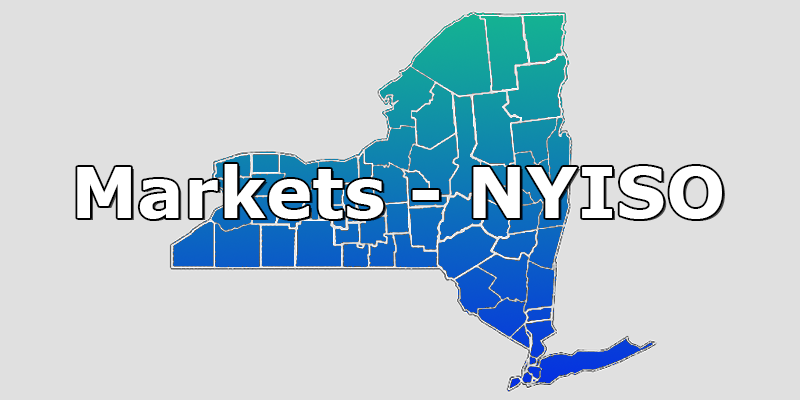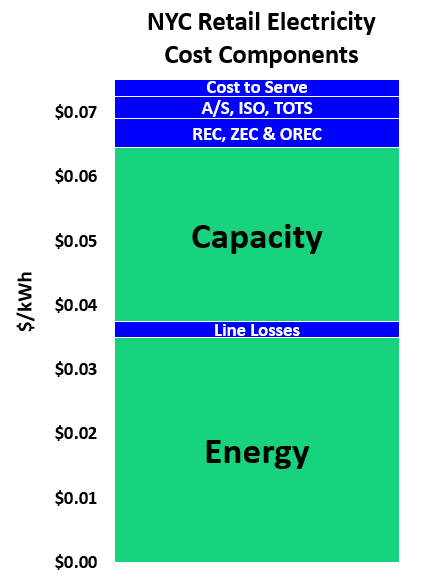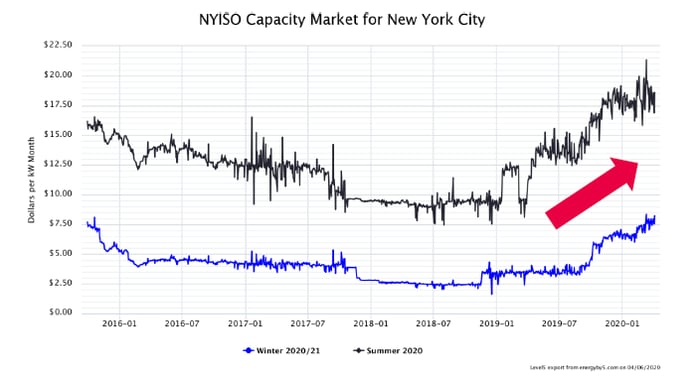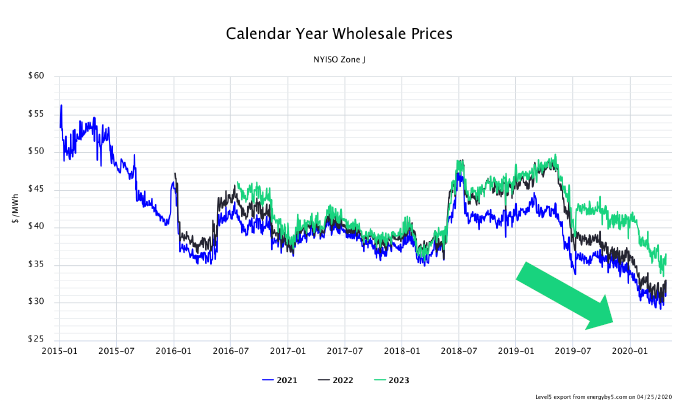
A fixed price electricity contract is the most common product selected by commercial clients throughout the deregulated markets in the US. And while the cost of the energy (the electrons moving through the wires) is the often the largest and most volatile part of a retail electricity price, there are several other electricity cost components that are built into that retail price.
These other cost components for a client in New York City are shown in Figure 1. It is important to note that there is a market price for both energy and capacity for all New York electricity customers. However, the relative magnitude of capacity and energy are highly dependent on location. In New York City, capacity can be as much as 40% of the retail electricity price as shown in Figure 1, while in Upstate New York, capacity is approximately 10 to 15% of the retail price.
When a fixed price product is chosen both capacity and energy are fixed in the retail electricity price. A prudent approach to purchasing interest rates or any market-based commodity is to fix the commodity when the prices are low and float the commodity when prices are high. The current market landscape in New York City is one where clients should consider floating capacity. A brief explanation of both capacity and energy is necessary before going into more detail.

Figure 1: NYC Retail Electricity Cost Components, by 5
Capacity reflects payments that are made to electricity generators to ensure that those generating units run during periods of peak electricity demand. Capacity is similar to an insurance payment, made in advance, to maintain a proper balance between electricity supply and demand.
Energy reflects the wholesale cost of the electricity that is produced by electricity generators. Like any other commodity, the price of electricity is more expensive in areas where there tends to be more demand than supply. The current market dynamic in New York City is one where energy prices are decreasing, and capacity prices are increasing. The fact that these two significant components of a retail electricity rate are moving in opposite directions suggests that a product, other than a fixed price, should be considered.
A capacity pass-through product is one where the energy in the retail electricity rate (and other components such as those in blue in Figure 1) is fixed and capacity is passed through or floats/varies each month. With this structure, the price on the retail contract could seem to be lower because the price of capacity is omitted and instead, is calculated each month and added to the supplier’s monthly invoice. A product that passes through the price of capacity should be considered when capacity prices are high, there is regulatory uncertainty around how capacity is priced and valued, and when a client can tolerate some variation in monthly electricity rates.
Figures 2 and 3 show how the market prices of capacity and energy have been trading recently. These charts clearly show that the price of capacity has been rising in New York City while the cost of energy has been decreasing. Different market conditions can drive different purchasing strategies and given the current market, New York City clients should discuss capacity pass-through structures with their advisor.

Figure 2: NYISO Capacity Market for New York City by 5

Figure 3: Calendar Year Wholesale Prices NYISO Zone J, by 5




